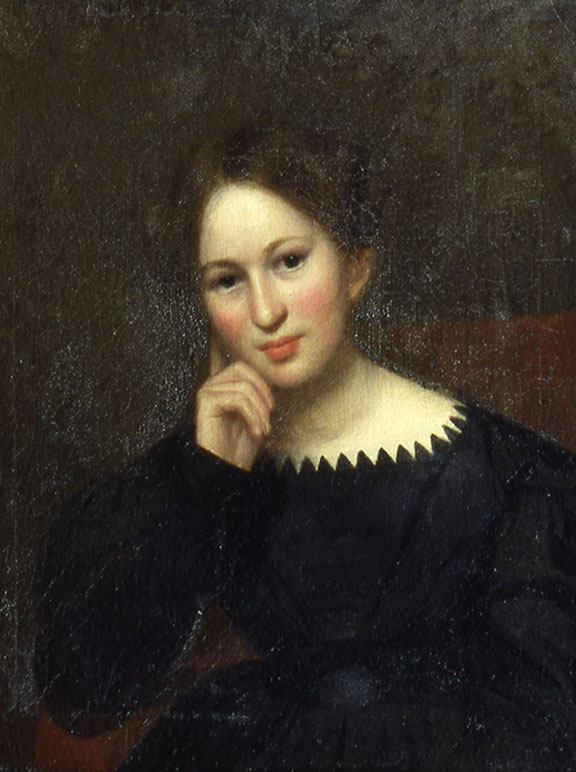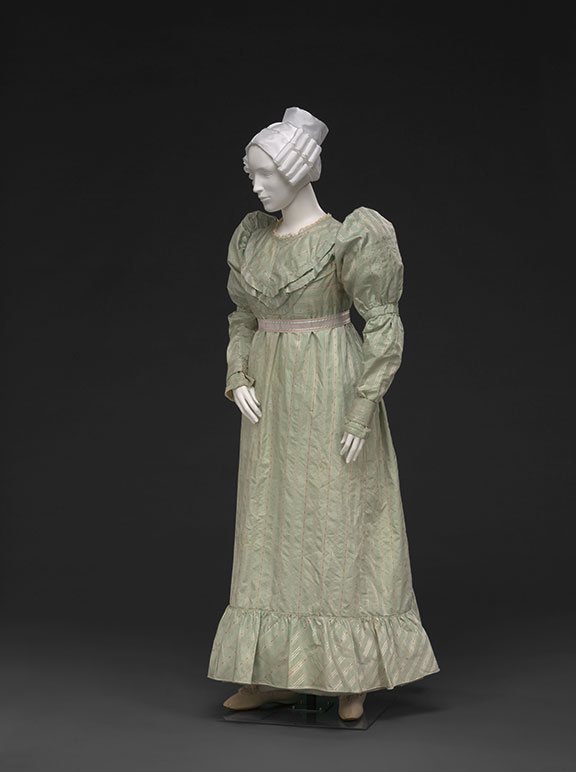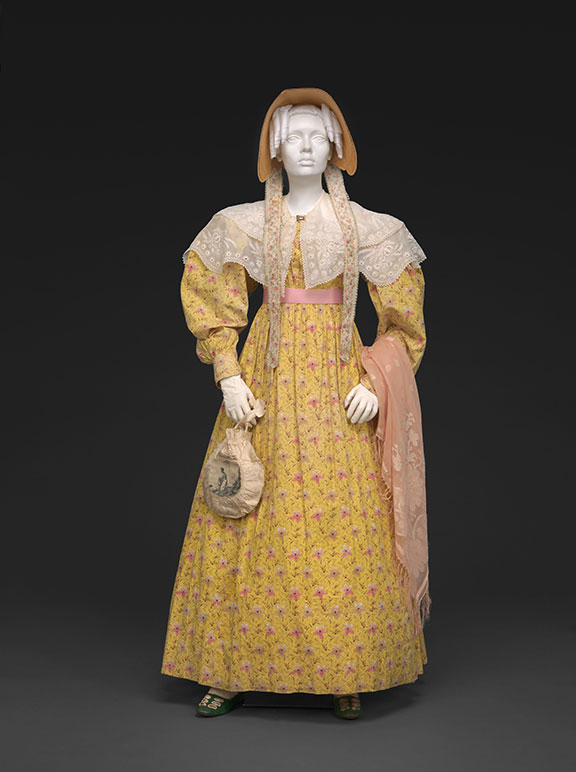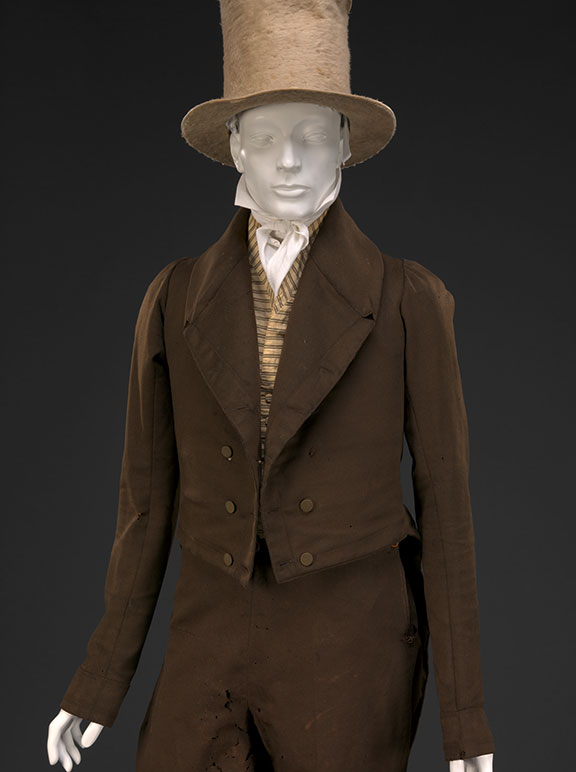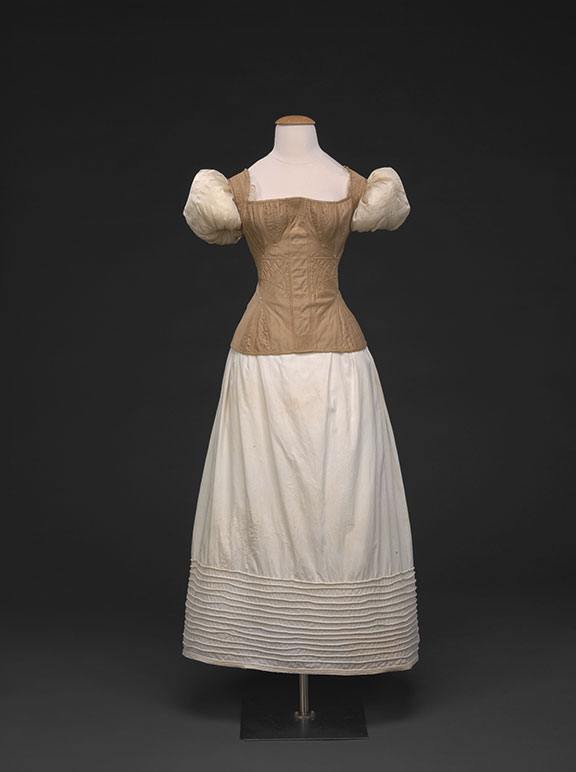Taffeta Dress with Vandyke Trim
About 1824-1826
Style: Widening sleeves and skirts, a trend first seen in the 1810s, continue in the mid-1830s. Here, the waist is nearly at the natural level but remains a little high. The visible Gothic influence of the zig-zag trim along the neckline, sleeves , and hem shows a new interest in Gothic design trends rather than the neoclassical styles of the early 1800s.
Widening hems of the 1820s were usually emphasized with trim such as flounces, or applied floral or abstract designs in a different fabric, similar in color but of a contrasting texture. Triangular trim (notice the neckline and sleeves, and the hem) was a huge trend in the 1820s. Zig-zag elements were named (and misspelled) “vandykes” after Anthony Vandyck, the Flemish portrait painter of English royalty and nobility in the early 1600s.
Fabric: Combining fabrics with different textures, and different reflectivity, was a popular way to provide some subtle detail to a dress. This garment combines matte taffeta with shinier satin.
This heavy, ribbed taffeta is probably a “gros de naples,” a stiff silk whose extra body helped give shape to wider skirts. Such silks may have been imported from Europe, India, or China
Ribbed silk taffeta dress with satin trim, modern ribbon waistband, about 1824-1826, 2010.34.1, gift of Ann Coleman.
Zig-zag edged trim at neckline and hem in Petit Courier des Dames (Paris), mid-1820s
Philinda Parsons Rand by John Goffe Rand, about 1827. DAR Museum 85.34.1, gift of Mary and Katherine Anglemyer



